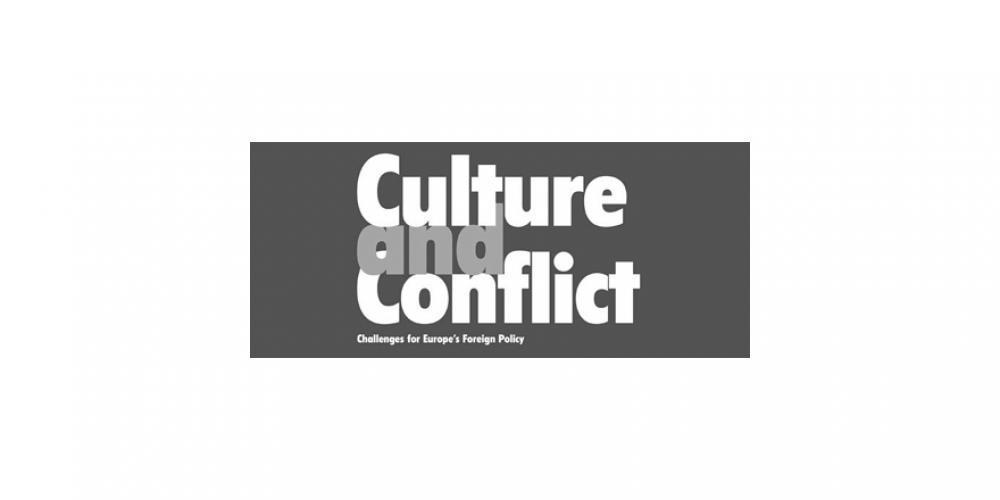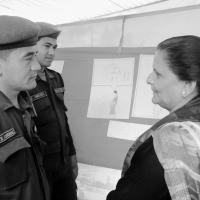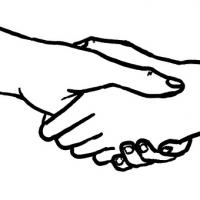Since at least the 1990s, we observe an increased and highlighted importance of the cultural dimension in conflict and conflict transformation. Politicians, scientists, practitioners and the international community have thus contributed to establish Culture and Conflict (or more positively formulated: Culture for Peace) as a widely recognized field within conflict transformation.
Our expertise
Incorporation of Strategic Arts- and Media-Based Conflict Transformation Tools and Techniques into Peace Building & Human Rights
- Consultancy, Project Design & Implementation regarding
- context and conflict analysis
- tools / artistic style (what)
- conflict stage (when)
- human resources and networks (who)
- impact orientation
- project cycle management
BACKGROUND
How we understand culture
- modes of thought, paradigm and action
- modes of planning, memory and communication
- general term for artistic style
As a vehicle for identity and meaning, culture, art and media shape perceptions, judgments and ideas about what constitutes ‘us and them’. Especially in protracted, identity conflicts, the unique power of aesthetic forms of expression and creative activity, contribute to tackle fixated, destructive patterns of behavior and thought as well as to transform stereotypes and prejudices about the other, which can be deeply engraved in the collective memory of a group.
Art and media can inform us about injustice, make us reflect upon existing patterns of thought and behavior, inspire us to take action, provoke us to speak out, to listen, to question, and to appeal to our sense of inner peace. As an instrument in trauma healing for example, it helps to acknowledge and grieve losses and to positively imagine a different future. It can be a place of truth telling, testimony and taking responsibility. It can bring together individuals from opposing sides of any conflict, break down physical and mental barriers, help create empathy, and contribute to reconciliation and integration. The following list further summarizes and adds to the most relevant advantages of art and media as instruments in peace building:
Art and media can help (to)
- change dynamics in relations and conflicts on all levels of society,
- transform the way people feel, think and act,
- experience conflict, to work on it and to transform it,
- be an alternative medium to explore past, present and future,
- appeal to having less conflict / more justice etc.,
- people to express themselves,
- to have a (more or less) safe space and the potential to be provocative,
- liberate people from their personal and societal restrictions,
- bring people together and reconcile / overcome division,
- use a language beyond words (e.g. if due to traumata or political reasons there is speechlessness),
- entertain and help to forget the conflict, the misery of one’s own situation,
- reach out to more target groups (e.g. due to illiteracy)
Still and despite the praise, art and media per se are neither ineffective nor constructive. Not all art is positive (e.g. propaganda art to promote violence; hate music), not all media/journalism is constructive (as for example the current debate on fake news shows or the fact that images of animosity are often fostered by media). Artistic forms of expression have little real policy impact in a post-conflict situation if the political will to change socio- economic and political structures is missing on the side of the political elite and the international community. Neither can the creation and consumption of art and media alone straighten the failure of political and military actors in their efforts to solve violent conflicts. Furthermore, as culture in general is in need of disruption and conflict to stay vital, this can mean in a worst case scenario cruelty, war and severe human rights violation – the ugly face of culture.
James Thompson, expert on applied and social theatre from University of Manchester (UK), points out that “Art has been historically very important in conflict zones, both actually maintaining some conflicts and helping people to live through them and to resolve them“ (Thompson 2014: 4*).
It seems reasonable then to also underline, that art- and media-based approaches to conflict transformation cannot replace other measures, but gainfully amend them if used strategically.
* Thompson, James In: Conflict Transformation Through Culture: Peace Building and the Arts. Salzburg Global Seminar, Daily Newsletter Session 532, April 7th 2014.



